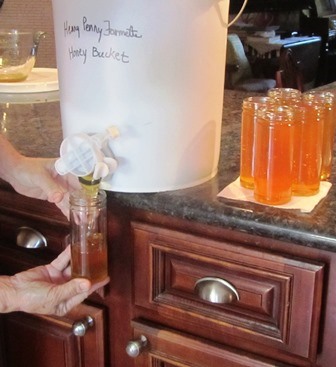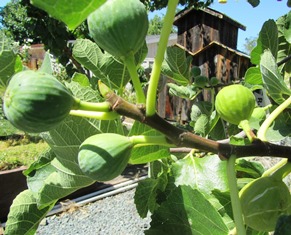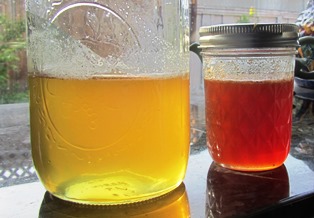Gifts from the Hive
Mention beekeeping, and most folks think right away of the delicious honey that bees make. Of course, farmers and gardeners love bees because the insects pollinate the plants growing in the vicinity of their hives.
After collecting pollen, the bees make honey–nature’s sweetener. Honey adds an interesting flavor to savory dishes and is a valued ingredient in desserts. Raw honey also has medicinal value since it has a slightly acidic pH and can cause a complex reaction when used to disinfect scrapes and wounds. But honey has other uses as well.
Because honey contains lower levels of fructose (unlike refined sugars), it is less inflammatory to the stomach and digestive organs. Today, honey is widely considered a superfood, one to be consumed to maintain good health. Honey is a great ingredient for cough drops and sore throat soothers. Or, drop a spoonful into your favorite tea for a cupful of enjoyment at any time.
Comprised of tiny particles of powdery pollen gathered from flowers, bee pollen is loaded with vitamins and minerals. It also contains amino acids, enzymes, and proteins. It can be eaten in foods or on cereal as well as used as an ingredient in soap.
Beeswax makes lovely candles and soaps. Honey is often used as a vital ingredient in homemade cosmetics, bath oils, and hand cream. Of course, all these gifts from the hive are as appreciated by those who don’t keep bees as well as those who do. And since the season of gift-giving is upon us, consider buying from local beekeepers their artisanal honey and other products from the hive.
The Figs Are Ripe, Fire Up the Grill
Last night the raccoons raided my fig trees, leaving a little deposit between honeybee apiary and the hen house. I know because this morning, I almost stepped in it . . . and I was barefoot and in still in my pajamas.
It was expecting the raccoons to drop by. It’s that time of the year when they like to show up for a little late night dining. Who can blame them. Figs ripened to perfection are among my favorite fresh foods, too.
Right now, the limbs of my Genoa White Fig hold an abundance of fruit covered in a thin green skin with rose-colored flesh. Whether you prefer to dry figs, make them into jam, use them in a tart, or serve them fresh with a little goat cheese, almost any variety of ripe fig will be delicious. They are an ancient food, dating back thousands of years to Asia Minor. The trees are hardy and can reach 12 to 20 feet tall.
The Brown Turkey, like the White Genoa, is self fertile and produces a multitude of delectable figs by its third year. The skin of Brown Turkey figs turns violet-brown with watermelon-colored flesh when fully ripe. Also, ripe figs turn downward from the limb–it’s how we they’re ready for picking.
I like to serve figs wrapped in Prosciutto, stuffed with a lovely, locally made goat cheese, and grilled. They make a great appetizer when friends drop by this time of year. The figs and goat cheese will pair nicely with a bottle of your favorite wine.
Since we live only about 25 to 30 minutes from the Napa wine country, we tend to buy local.
RECIPE: GRILLED FIGS, GOAT CHEESE, and PROSCIUTTO
Ingredients:
6 to 8 Brown Turkey or other ripe figs
1/3 cup goat cheese (or a bit more as needed; try herb goat cheese as a variation)
6-8 slices of Prosciutto
1/3 cup organic raw honey
Directions:
Fit a pastry bag with a tip to pipe the goat cheese.
Fill the bag with goat cheese.
Cut tiny openings into the bottom of each fig to permit insertion of the piping tip.
Pipe the filling into 8 to 10 figs (they’ll swell; don’t over fill or they’ll split).
Wrap slices of Prosciutto around each stuffed fig.
Brush the grill grate with olive oil.
Grill the figs 2 to 3 minutes.
Remove from heat, plate the figs, and drizzle honey across them.
Serves: 4 (2 figs per person)
Seasonal Flowers Change the Taste and Color of Honey
If you’ve ever wondered where honey gets its color and taste, think flowers. Or, more correctly, pollen from the flower and herb blooms and tree blossoms.
In the environs that encompasses roughly five to ten miles around the Henny Penny Farmette, honeybees gather pollen from blossoms on lavender, citrus, sunflowers, cosmos, fruit trees, and other flowering trees. Bees collect pollen from cultivated gardens but also from plants growing wild on hillsides and in the meadows and fields.
The first woodland flowers and wildflowers of spring yield honey that is a pale lemon color and tastes sweet and light. Later in the season, the pollen bees collect from citrus tree blooms such as orange blossoms becomes honey with citrus notes and aroma. When certain types of eucalyptus trees bloom in September, the honey takes on a warm amber color and a strong and earthy taste.
Dark honey is also found in a spring hive. It can be traced to the pollen that the bees have discovered and gathered from blossoms and blooms of flowers, trees, or herbs with a strong flavor and dark color.
If you want the health benefits from honey, purchase the raw honey. Raw honey is high in antioxidants and also has immune-boosting properties, according to Dr. Tasneem Bhatia, from the Atlanta Center for Holistic and Integrative medicine.
In a December 2012 appearance on the Dr. Oz show, Dr. Bhatia recommended people take 1 to 2 teaspoonfuls of buckwheat honey every day as a natural remedy for cold, sore throat, and flu symptoms. See, http://www.prweb.com/releases/honey/buckwheat-honey-raw/prweb10242276.htm
Raw honey means it has not been heated or otherwise adulterated by processes that reduce or compromise the healthy benefits. Beneficial enzymes, propolis, pollen, minerals, vitamins, amino acids, and antioxidants are destroyed when the honey is heated.
Drink your hot tea or warm milk with honey, but don’t put the honey in the cup of liquid and stick it into the microwave. Warm the liquid first, then add the honey.
It matters not whether your taste leans toward the light honey or the dark, the liquid honey or the honeycomb, have some honey every day. It’s good for you.
 Facebook
Facebook Goodreads
Goodreads LinkedIn
LinkedIn Meera Lester
Meera Lester Twitter
Twitter










